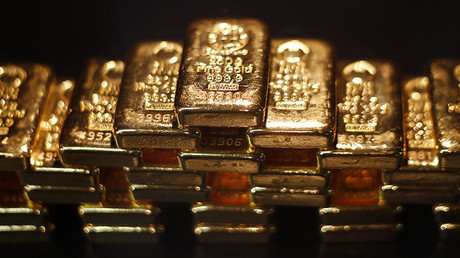

The volume of gold reserves in Canada has declined steadily over the past 50 years. In the mid-1960s, Canada’s gold reserves exceeded 1,000 tons. By 1985, half had been sold. In 2015, the reserves were down to three tons and now the country has no gold left.

According to Finance Department data, Canada sold 41,106 ounces of gold coins in December and another 32,860 ounces of gold coins in January. The remaining 21,929 ounces were sold in February.
“The government has a long-standing policy of diversifying its portfolio by selling physical commodities (such as gold) and instead investing in financial assets that are easily tradable and that have deep markets of buyers and sellers,” Finance Department spokesman David Barnabetold CBC in February, when Canada was left with $24 million worth gold in its reserves.
By comparison, the United States had 8,133 tonnes of gold (261.5 million troy ounces) at the end of 2015, worth almost $300 billion, according to the World Gold Council, which amounted to more than 72 percent of its total foreign reserves.
“These days, gold has no legal purpose that is required under monetary policy,” Ian Lee, a professor at the Sprott School of Business at Carleton University in Ottawa told the Globe and Mail. The link between banknotes and gold has steadily disappeared in the second half of the 20th century.
However, many are calling for currency to be backed by gold again. Among them is Ted Cruz, who is running for the Republican nomination for US president. The Texas senator has suggested America should return to the gold standard.
ATTENTION READERS
We See The World From All Sides and Want YOU To Be Fully InformedIn fact, intentional disinformation is a disgraceful scourge in media today. So to assuage any possible errant incorrect information posted herein, we strongly encourage you to seek corroboration from other non-VT sources before forming an educated opinion.
About VT - Policies & Disclosures - Comment Policy





Comments are closed.